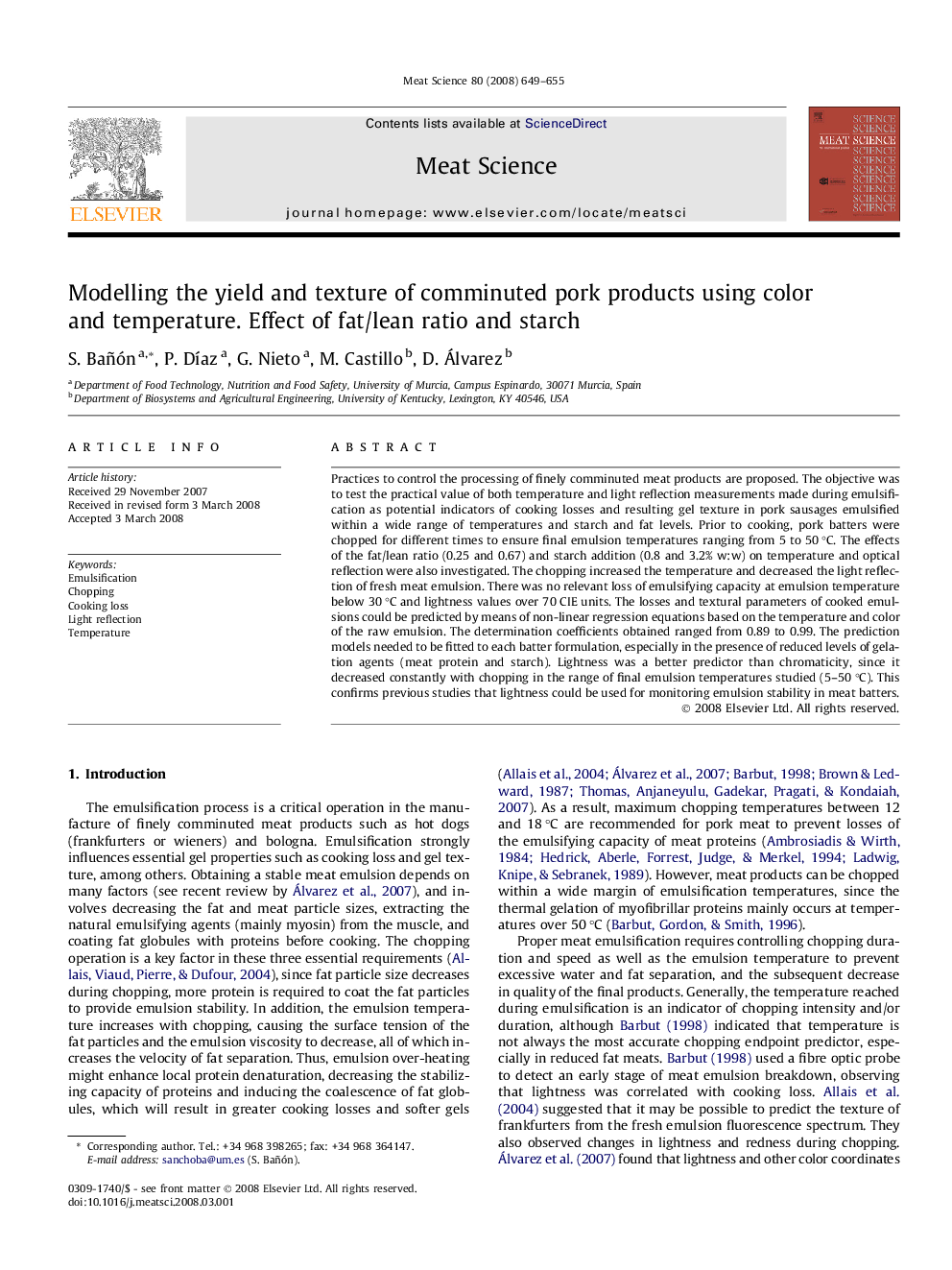| Article ID | Journal | Published Year | Pages | File Type |
|---|---|---|---|---|
| 2451362 | Meat Science | 2008 | 7 Pages |
Practices to control the processing of finely comminuted meat products are proposed. The objective was to test the practical value of both temperature and light reflection measurements made during emulsification as potential indicators of cooking losses and resulting gel texture in pork sausages emulsified within a wide range of temperatures and starch and fat levels. Prior to cooking, pork batters were chopped for different times to ensure final emulsion temperatures ranging from 5 to 50 °C. The effects of the fat/lean ratio (0.25 and 0.67) and starch addition (0.8 and 3.2% w:w) on temperature and optical reflection were also investigated. The chopping increased the temperature and decreased the light reflection of fresh meat emulsion. There was no relevant loss of emulsifying capacity at emulsion temperature below 30 °C and lightness values over 70 CIE units. The losses and textural parameters of cooked emulsions could be predicted by means of non-linear regression equations based on the temperature and color of the raw emulsion. The determination coefficients obtained ranged from 0.89 to 0.99. The prediction models needed to be fitted to each batter formulation, especially in the presence of reduced levels of gelation agents (meat protein and starch). Lightness was a better predictor than chromaticity, since it decreased constantly with chopping in the range of final emulsion temperatures studied (5–50 °C). This confirms previous studies that lightness could be used for monitoring emulsion stability in meat batters.
